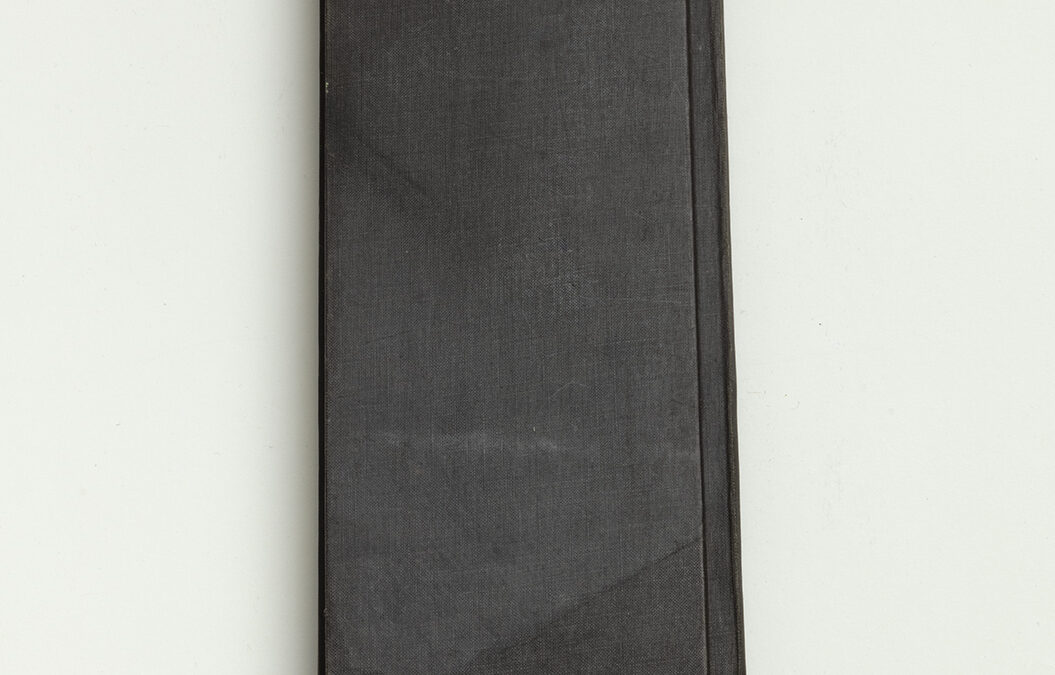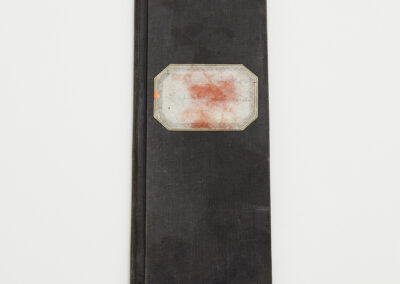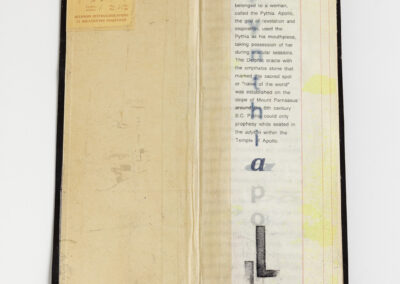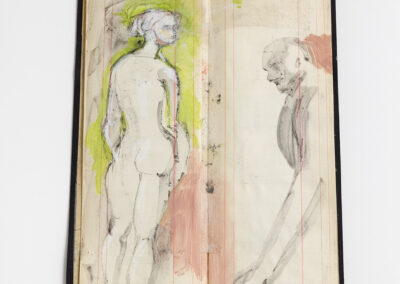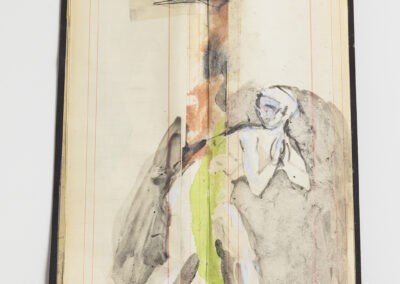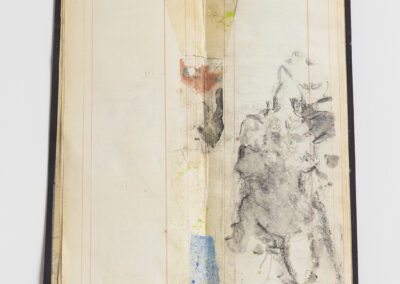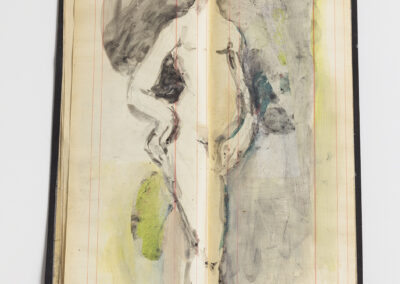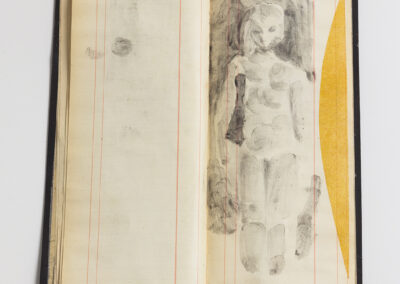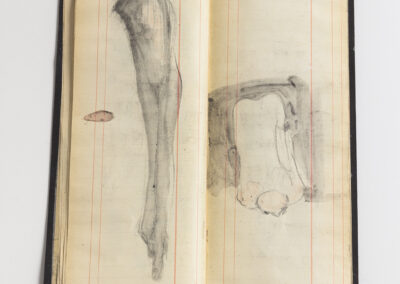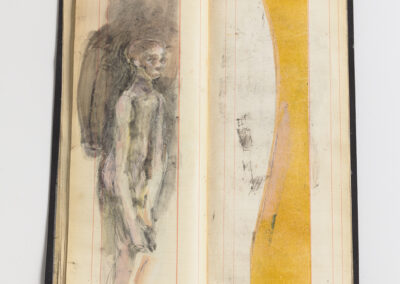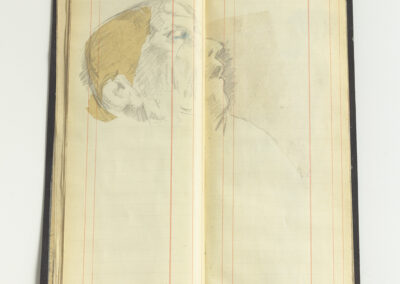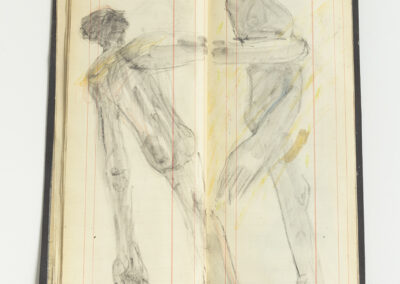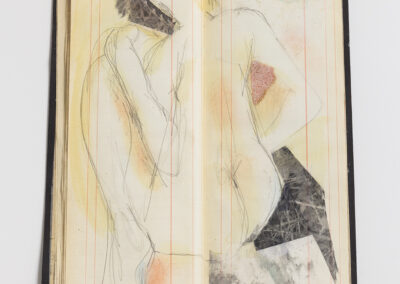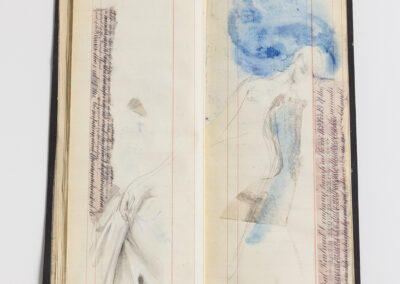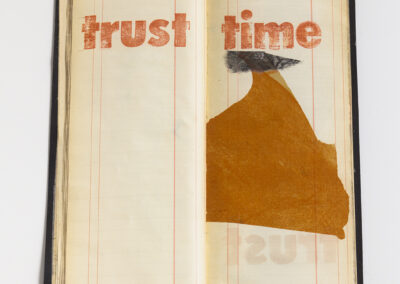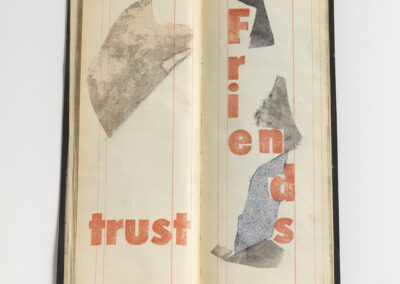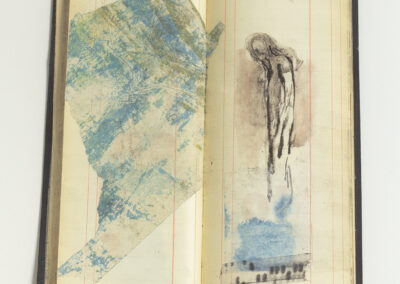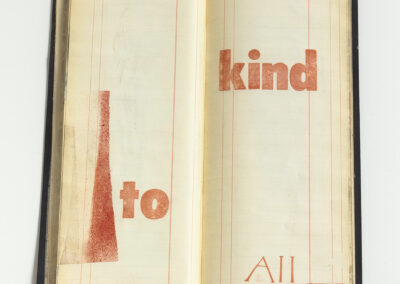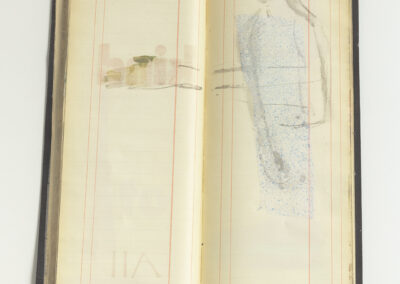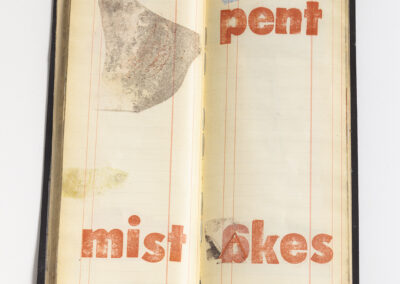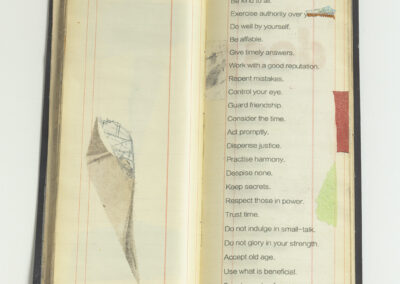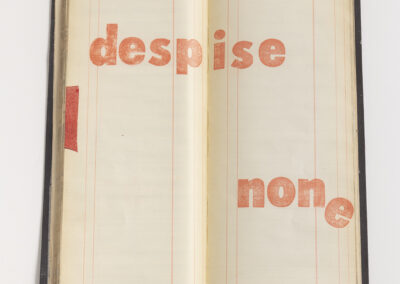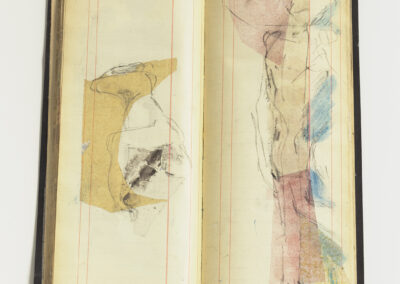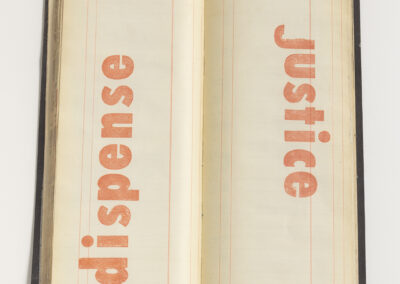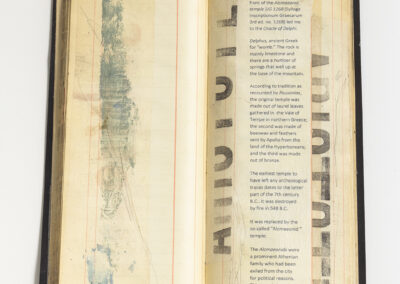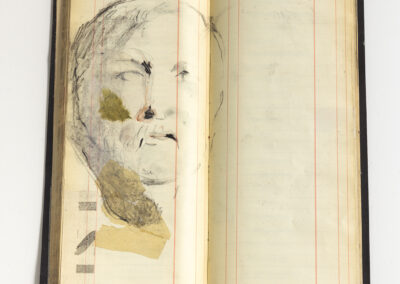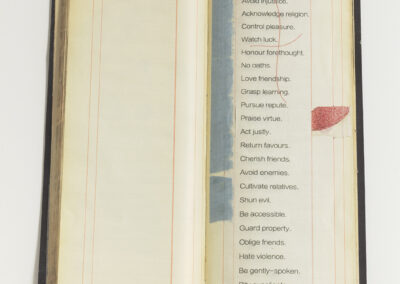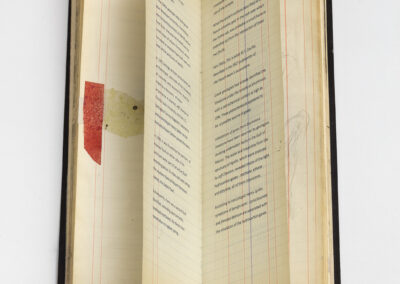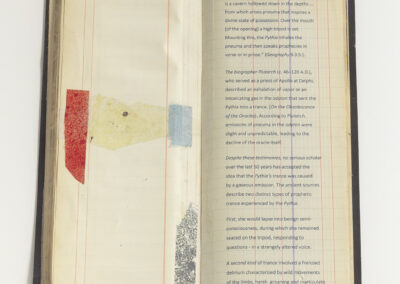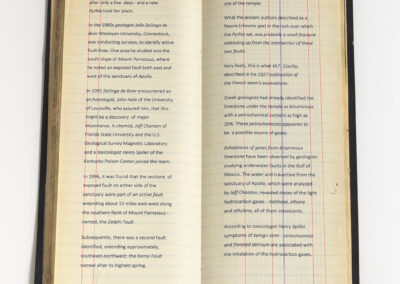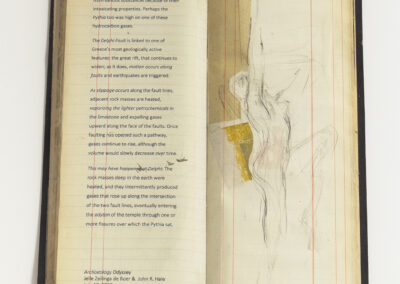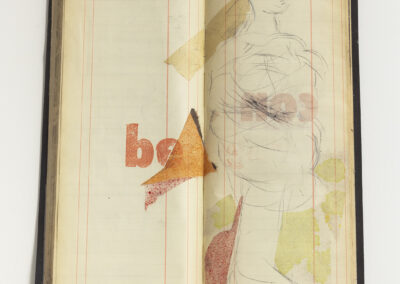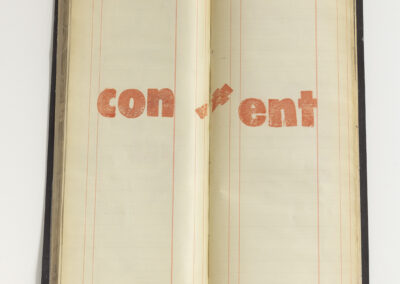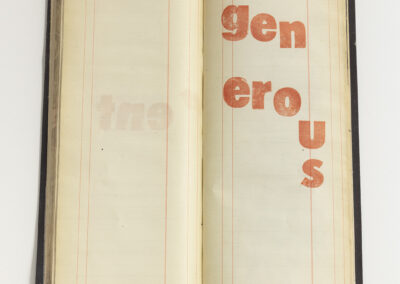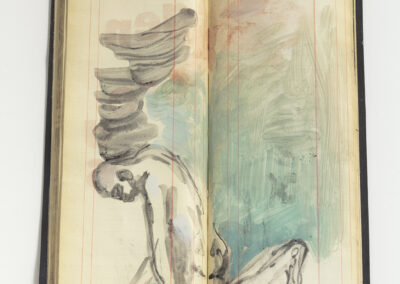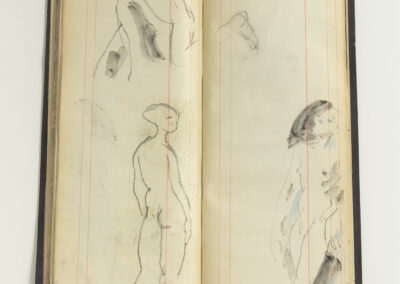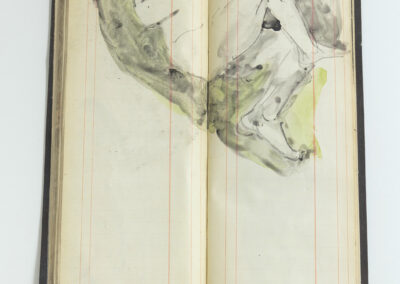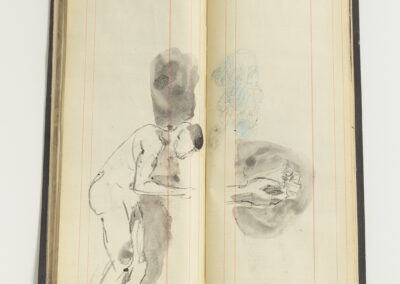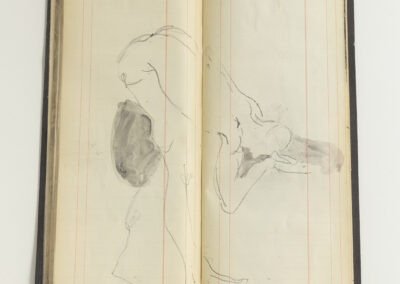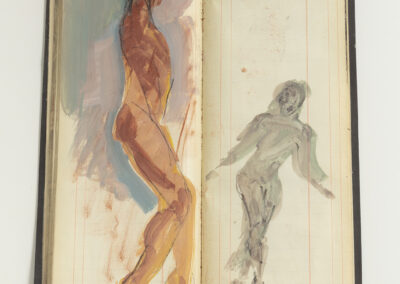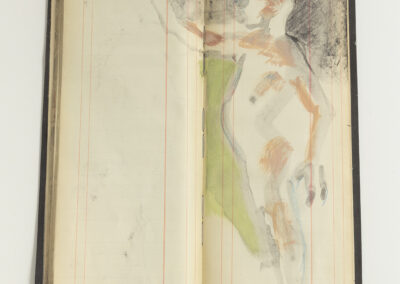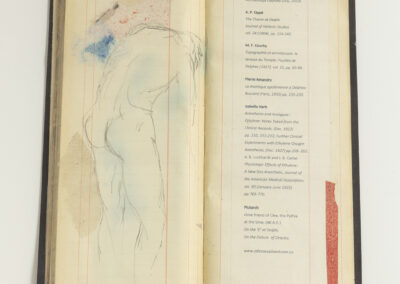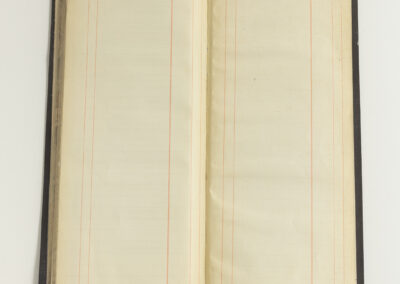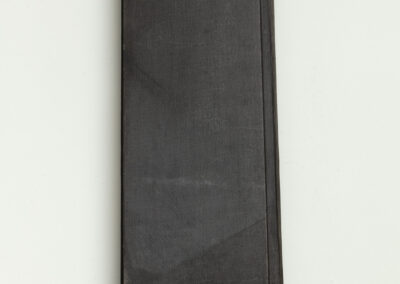The Mouth of the Oracle
2024
The Mouth of the Oracle 37 x 12 x 2 cm in card board case, ready made, collage, drawing, painting, wooden letter stamping, ink-jet and text by T.Bergelt in English.
During a residency at the Finnish Institute in Athens, intrigued by Greek history about the Delphi Oracle, I stumbled over the the inscriptions of the Alcmaeonid temple. The Alcmaeonids were a prominent Athenian family who had been exiled from the city for political reasons. The temple was in Delphi, but was destroyed in 373 BC and replaced with the temple whose remains can be seen today. These inscriptions can be found in the volume 3 of the 1960 reprint of the Sylloge Inscriptionum Graecarum. The reference is SIG 1268, pages 392-397 in volume 3 of the 1960 reprint.
Reading about the Temple of Apollo I came about research which investigated the fumes arising from underneath the seat of the Oracle, always being a woman, named Pythia. The biographer Plutarch (c. 46–120 A.D.), who served as a priest of Apollo at Delphi, described an exhalation of vapor or an intoxicating gas in the adyton (the seat of the Pythia) that sent the Pythia into a trance. (On the Obsolescence of the Oracles). According to Plutarch, emissions of pneuma in the adyton were slight and unpredictable, leading to the decline of the oracle itself. Greek geologists had already identified the limestone under the temple as bituminous with a petrochemical content as high as 20%. These petrochemicals appeared to be a possible source of gases. Examining and quoting the various scientific methods have brought to light, what could explain the oracles ecstatic actions and illusive perceptions of the messages by the Gods.
